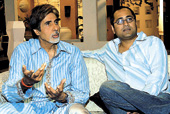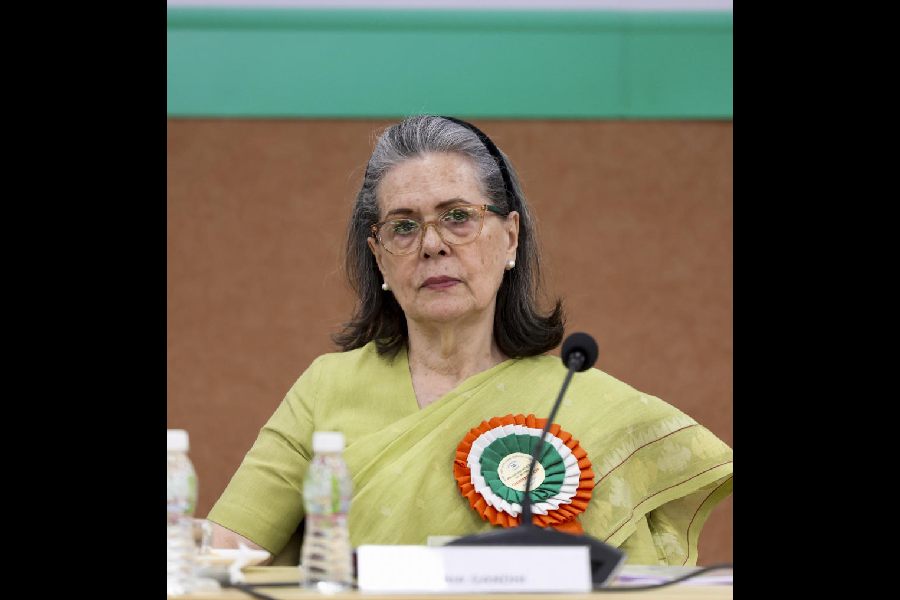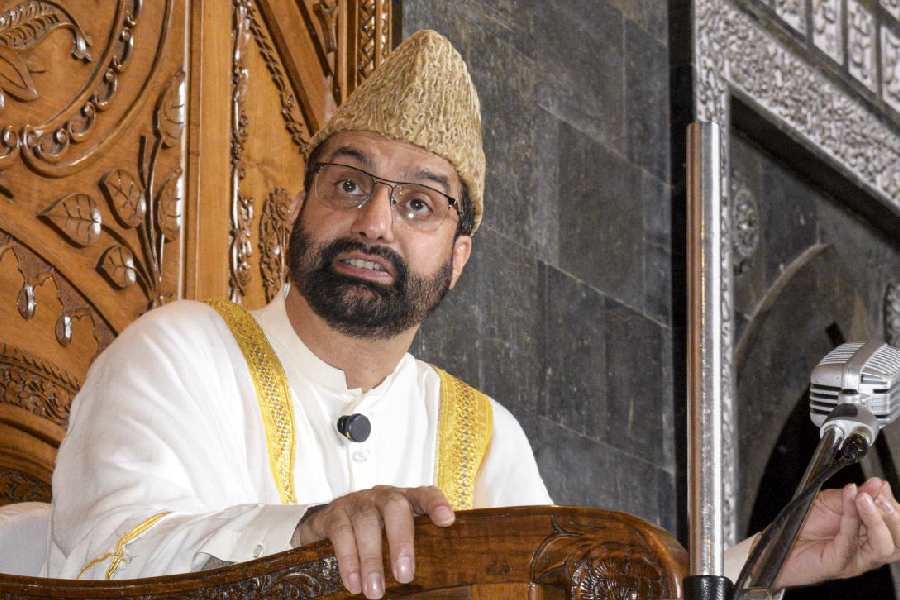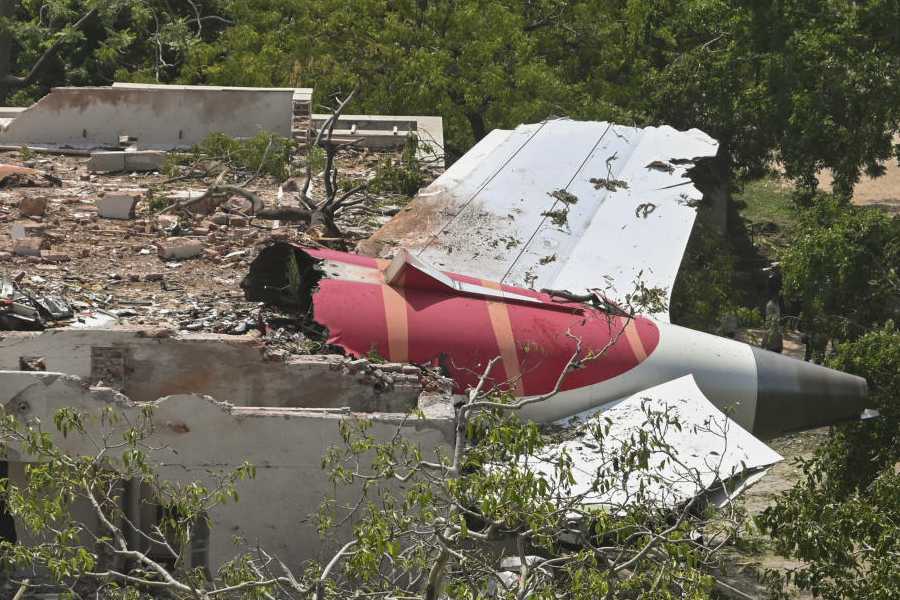 |
| A collage by Shakila, inspired by a bazaar |
Twenty-odd markets in Calcutta are about to be knocked down and replaced by new structures. Where will one shop for dhenkishaak?
On Monday, after Calcutta High Court okays its sale, three companies — Neelanchal, SR Nirman of Howrah and Sovana Construction — will bid for the purchase of the bedraggled market in Bowbazar. Without even the most basic amenities such as running water and proper toilets, this century-old market belonging to the Karuri family of Bagbazar provides a water-tight case for the demolition of all the primitive markets of a city that is striving hard to look young.
The side housing the provisions stores and potato-and-onion shops is always hot and stuffy, and there is hardly any fish stall without a cat crawling under it. Rarely cleaned, fish scales, chicken feather and blood pile up all over. The vendors have no compunction about relieving themselves openly in the open drains surrounding the fish stalls. Neglected for years, the sprawling building with 450 tenants is falling to pieces. In June 2005, a verandah had broken loose and it came crashing down. Luckily, no one was injured. So now that it is bound to be reconstructed some time, is it good riddance to bad rubbish?
Effacing the market from the face of Bowbazar seems to be the easiest solution but think of a tall, glass cube in a dusty gray neighbourhood that is not known for its eagerness to look trendy. Anything flashy will stick out a mile in north Calcutta where buildings look like they have long stopped resisting the gravitational pull. But nobody thinks of reviving an area , particularly in a city where the roads are too narrow to contain vehicles, whose numbers swell every passing day, and pavements have been handed over by the mayor himself to hawkers. Built in isolation there is no guarantee that a market will prosper. The hefty granite market constructed next to the railway siding at the New Alipore end of Durgapur bridge has been lying vacant since construction.
All fall down
 |
| Lake Market fish stalls. Picture by Sanjoy Chattopadhyaya |
Bowbazar is not the only market which will be or is being knocked down. With Lake, College Street, Entally and Lansdowne (hanging fire for a decade) markets heading the list, a similar fate awaits 20-odd markets belonging to the Calcutta Municipal Corporation.
They have not heard from the mayor yet, but traders and vendors of Park Circus market are in a tizzy, for, as everybody knows, Reliance will soon reconstruct this bazaar, with middle-class sympathies.
Girindra Chandra Pal, secretary of Park Circus Market Byabasayi Samity, fears that its 550 members, comprising 400 stall-owners and 150 vendors, will lose their only livelihood. Even if they find a place in the new building, perhaps people will prefer to do their shopping in the AC utopias that all malls aspire to be, instead of in a cramped, stuffy bazaar, where one constantly runs the risk of soiling one’s clothes.
Theatre personality Saoli Mitra has grown up with this market. “In the beginning only vegetables and haberdashery were available here. Now it has become larger. Clothes, watches, medicines and cheap shoes can be got here. It is meant for a middle-class and poor clientele,” she says. Her theatre group, Pancham Vaidik, has held its rehearsals in a hall on the first floor of this market since 1993. A museum in the memory of theatre personality Tripti Mitra, her mother, has opened here, and as Saoli explains, the fate of this “public property” is as uncertain as that of her group.
Grave problems like unemployment and displacement apart — over which small shopkeepers are ready to go up in arms to resist takeover by big business — the older generation of Calcuttans does not see any advantage accruing from malls. But where her elderly mother sees only broken pathways, puddles, narrow drains and disorganised stalls in the groundfloor of Lake Market which has reopened in sections before the mall is ready, daughter Srabani Dasgupta Ghosh finds relief in the newly-installed ceiling fans, fish which she can buy in a jiffy, and dressed shrimps and mourala (a tiny fish with silver scales which Bengalis relish) at another store next door for which she is willing to pay Rs 10-15 extra.
The younger woman is a dentist in a corporate hospital and she admits that for her time is money. “I leave the list of provisions required at the store and everything is packed and ready by the time I return home in the evening. I prefer everything to be standardised and provisions such as daal in sealed plastic packets and not in paper bags. Now that the corporate has entered our lives you can’t help it. I know that many small retailers have lost their livelihood,” says the woman who has shopped at Lake Market daily since her late teens.
But sanitised sameness and standardisation are at cross-purposes with the colourful collage of life that Calcutta is so proud of. Everything — from cosmetics to foodstuff wrapped in plastic — is pigeonholed and docketed in malls. Food courts and fine dining — new terms for most Calcuttans — are also on offer. But it’s all the same.
Impersonal
 |
| College Street market. Picture by Rajib Basu |
“The old markets have an atmosphere of their own. A human relationship develops between buyers and sellers. I have done my shopping for years at Lake Market. Things are becoming impersonal. Moreover, bazaars are always colourful — not necessarily arranged. Carrots, pumpkin, flowers in gaudy heaps. In malls everything will be neatly arranged in gla-ss cases,” says artist Paritosh Sen.
Each market has a character, colour and smell of its own. “Nothing like the flowers of Lake Market. At one time flowers used to be flown in from Madras so that the South Indian ladies could wear these in their hair when they went for South Indian film shows at Menoka. All South Indian specialities were available here,” says Shila Roy, who taught at a reputable girls school.
Local food habits
“The character of our household and food habits are bound to change once bazaars are elbowed out. Park Circus market, where I go to buy provisions, attracts a good mix of Muslim and Christian buyers. Gariahat is purely Bengali — here the prices of foodstuff soar during festivals like Bhaiphonta. People from all financial strata visit these markets. Will I be able to buy overripe guavas to make jelly anywhere else but bazaars? Where else will I find dhenkisaak?” laments Rita Basu, who runs a school for children.
Pulak Chandra Dass, a senior advocate, who lives in Beadon Street and can think of buying fish nowhere else but Maniktala market, wonders if people of north Calcutta will easily accept malls, however convenient they may be. “Even at Selfridge’s you can’t get live fish which you can find in any Calcutta market,” says the 73-year-old diehard north Calcuttan.
Memories can breathe new life into a recently-demolished markets. Cupolas and frames of arches are all that remain of College Street market, which will soon turn into Barnaparichay, a mall whose attraction will supposedly be books. Kalyan Kumar Ghosh was born and raised in Arpuli Lane and although he moved deeper north a few years ago he vividly recalls the flower and fruit range of College Street market, the pickle shops, the chappal shop of KM Das — “the only place where Vidaysagari chati was available” — and the kabiraji shops, run by Muslim men from Bagnan, where one could find the exotic herbs, roots and barks prescribed by kabiraj Shibakali Bhattacharya.
Bengali girls bought their trousseau here, and bellmetal utensils for weddings were available at Sashi Bhushan Prabhapada Dey. Globe Nursery was an institution.
Shakila, the collage artist, rose from the dust of Taltala market. The daughter of a poor vegetable vendor, she excels at creating veggies arranged in a dala in apple-pie order. Only a bazaar could inspire that.










